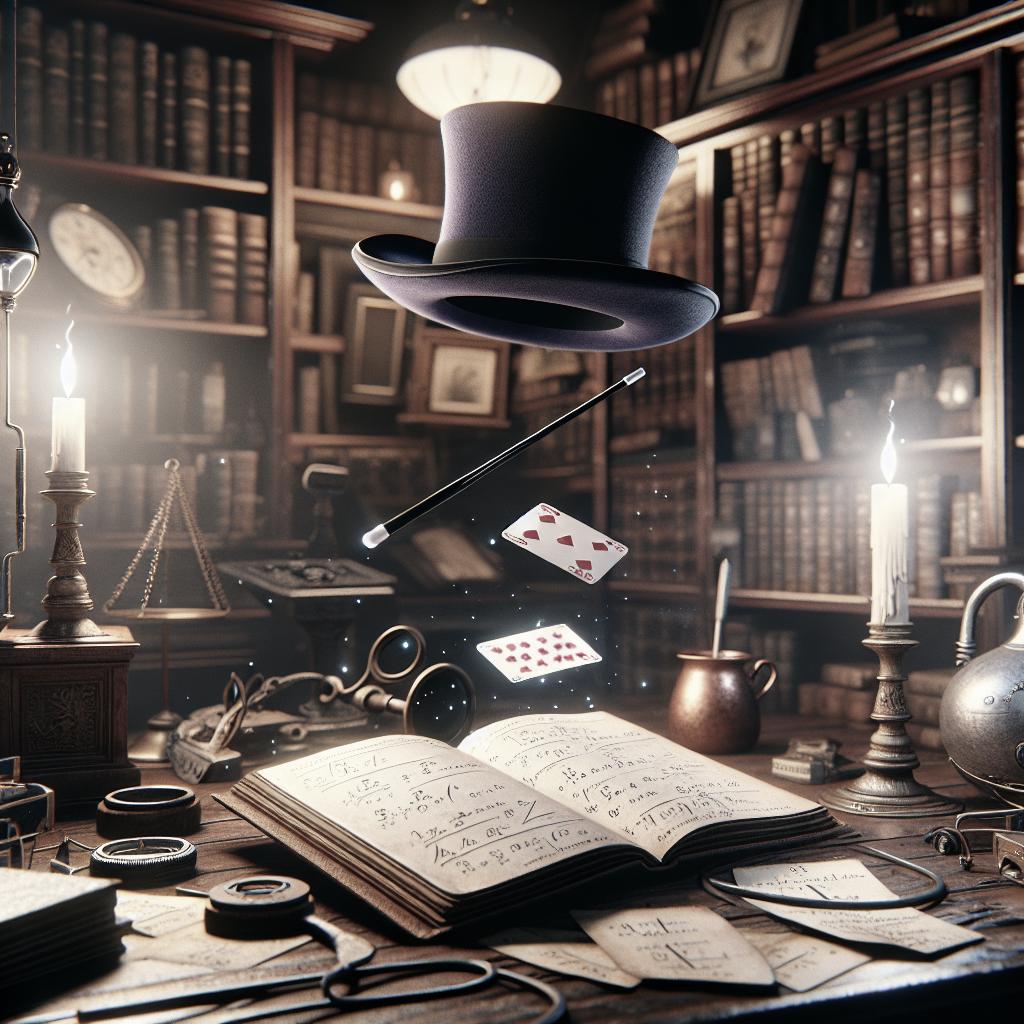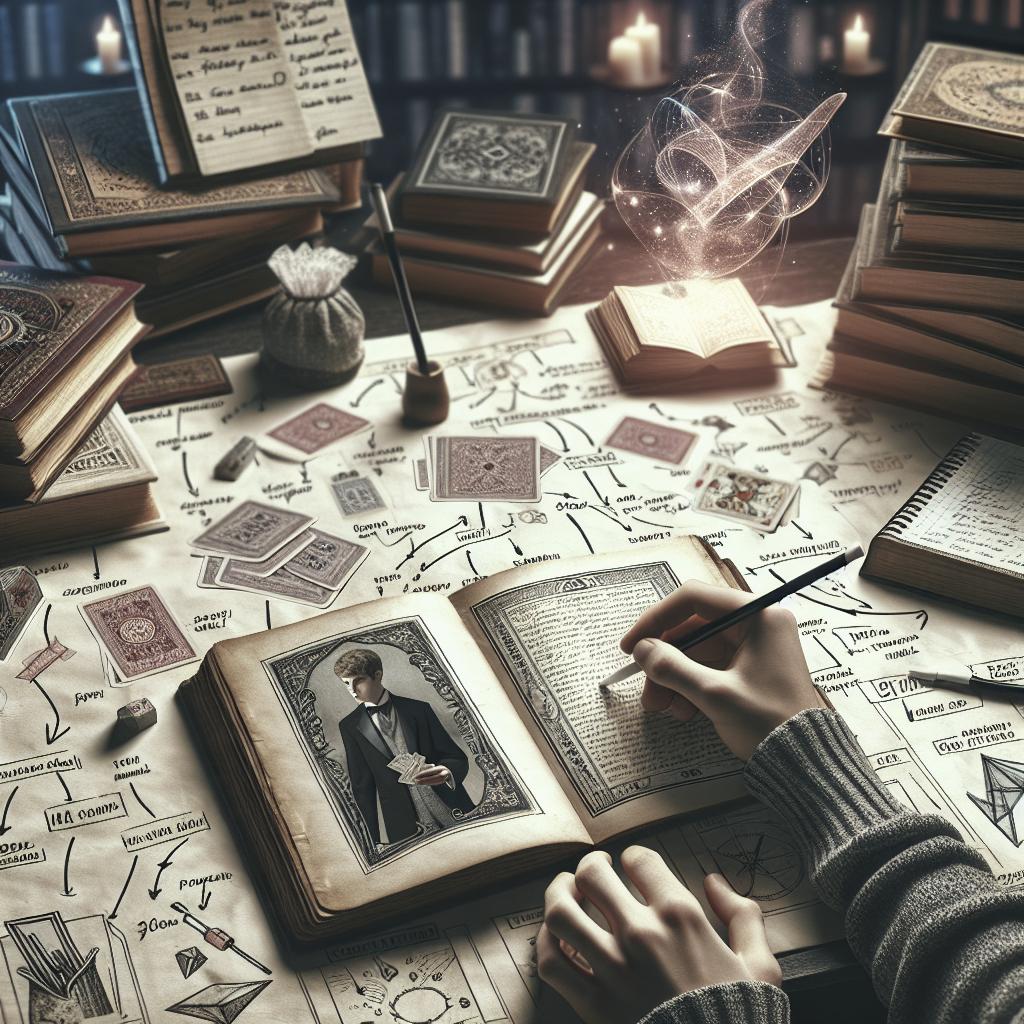“`html
The Secrets Behind Levitation Tricks
The captivating art of levitation in magic has mesmerized audiences for centuries. One of the most iconic illusions, the levitating woman, continues to spark curiosity and wonder. This blog delves into the allure and mechanics of this timeless trick, revealing the careful blend of science and art that mystifies viewers. From the basic principles to modern variations, discover how magicians master the illusion and why it leaves audiences questioning reality. Read on to unlock the magic behind the levitation trick, understand its evolution, and discuss the ethics of revealing such secrets.
The Levitating Woman: A Timeless Illusion
The levitating woman trick has been a staple of the magical arts for over a hundred years, capturing the imaginations of countless spectators. From the grand stages of Victorian theaters to today’s modern venues, magicians have been performing this illusion to demonstrate the seemingly impossible feats of levitation. The image of a woman rising effortlessly into the air has become a symbol of magic and mystique, drawing applause and disbelief in equal measure.
Part of its lasting appeal lies in its simplicity and elegance. The levitating woman serves as a perfect example of how magic can transcend language barriers and cultural differences. No elaborate narratives or backstories are necessary, as the trick speaks for itself through its pure visual impact. Its enduring popularity is a testament to its ability to enchant audiences, regardless of advancements in technology or shifts in entertainment preferences.
The Allure of Levitation in Magic
Levitation tricks tap into a fundamental human desire: the wish to defy gravity and experience the ethereal. This universal longing is what makes levitation illusions particularly compelling. By allowing the audience a glimpse into a world where the rules of physics seem to bend, magicians create a sense of wonder and hope, enticing viewers to suspend disbelief, if only for a moment.
The psychological elements of levitation are clear. It symbolizes freedom, escape, and ascension—concepts that are deeply rooted in the human psyche. Whether for religious, philosophical, or purely entertaining reasons, the image of levitating with ease appeals to something primal, stirring emotions that are as fascinating as the trick itself.
Basic Principles of the Levitating Woman Trick
At the core of the levitating woman illusion are fundamental principles that both showcase ingenuity and conceal the mechanics of the trick. Typically, these involve well-crafted props and cleverly designed staging. One of the most important tools employed is the use of hidden supports, which are disguised to maintain the illusion of weightlessness.
Attention to detail in prop creation, costume design, and stage lighting plays a critical role in maintaining the integrity of the trick. Everything from the color and texture of the backdrop to the magician’s movements is meticulously planned to ensure that no subtle clue betrays the underlying method. It’s a carefully orchestrated performance where every element contributes to the overall illusion.
The Science and Art Behind the Illusion
Magic is an intersection of artistry and science, and the levitating woman trick is no exception. Engineers and craftsmen collaborate with magicians to design innovative apparatus that facilitate the illusion while ensuring the performer’s safety. This process involves physics—understanding balance, center of gravity, and mechanics—to create the appearance of levitation.
Aside from the technical aspects, magicians must also be adept performers. Their ability to misdirect the audience’s attention with showmanship is paramount, as it draws focus away from the mechanical components. The fusion of these disciplines is what transforms a mere trick into a compelling display of magical wonder.
Steps to Perform a Basic Levitation Illusion
Executing a basic levitation illusion requires precision and practice. The first step involves setting the stage, carefully positioning the audience’s line of sight relative to the apparatus. Creating an optimal viewing angle minimizes the chance of detection and enhances the mystique surrounding the levitation.
During the performance, the magician’s gestures must synchronize with the action to maintain the illusion. Whether using a cloth to cover the person being levitated or employing dramatic hand movements, these actions are designed to direct the audience’s attention and hide any telltale signs of the trick’s mechanics.
Unveiling the Secret
While revealing the secrets behind magic tricks is often taboo within the community, it serves educational purposes when understanding such illusions. The levitating woman’s most common technique involves using concealed platforms or wires strategically placed out of the audience’s view.
These devices can often be adjusted and refined based on the venue, performer, and requirements of the act. However, even with knowledge of these mechanical aspects, the illusion remains impactful due to the magician’s practiced skill in performing it convincingly. It demonstrates that while knowing a secret might explain how a trick works, it doesn’t diminish its entertainment value.
Variations of the Trick
Levitation tricks have numerous variations, each offering unique twists on the classic illusion. Some magicians opt for a more intimate setting, modifying the trick to be performed up-close or within smaller spaces. Others may incorporate technology, such as elaborate machinery or digital enhancements, to bring the illusion into the modern age.
Contemporary performers may also experiment with innovative levitation adjuncts, such as flying carpets or rising magical objects. These variations not only ensure that the trick remains fresh but also challenge magicians to elevate their craft continually.
Important Considerations
When attempting a levitation trick, several key considerations must be addressed to ensure both safety and the integrity of the performance. Selecting the right equipment—one that is reliable and suited to the performer’s skill level—can significantly impact the illusion’s success and the magician’s credibility.
Furthermore, ethical considerations must be taken into account, particularly concerning audience expectations and transparency about risks involved. Balancing the mystery with responsibility is crucial, as every performance carries the weight of potentially influencing public perception of magic.
Key takeaways
The levitating woman illusion is a testament to the blend of science, art, and psychology that defines the craft of magic. By combining well-engineered mechanics with skillful performance, magicians continue to captivate audiences worldwide. Understanding its intricacies not only deepens appreciation but also reveals the timeless nature of this enigmatic art form.
As magic continues to evolve, so too do the approaches magicians use to mesmerize audiences. By staying true to foundational principles while embracing modern advancements, the levitating woman remains an emblem of both the wonder of magic and the creative potential within us all.
Future Prospects of Levitation Illusions
The future of levitation illusions appears promising, as performers continue to push the boundaries of what is possible. Advances in technology and materials provide new opportunities for magicians to refine and reinvent classic tricks. Additionally, the seamless integration of multimedia elements offers innovative ways to captivate and engage audiences.
Whether through classic renditions or modern reimaginings, the enduring appeal of levitation ensures its place in the magician’s repertoire for years to come. As audiences seek ever-more immersive experiences, magicians will undoubtedly rise to the challenge, continuing to inspire and mystify with their gravity-defying feats.
Frequently Asked Questions
Q1: How do magicians make the levitating woman trick look so real?
Magicians employ a combination of cleverly concealed apparatus and precise performance techniques. By expertly misdirecting the audience’s attention and using crafted materials that blend seamlessly into the background, they create a believable illusion of levitation.
Q2: Can anyone learn to perform the levitating woman trick?
While the fundamentals of the trick can be learned, performing it successfully requires practice, skill, and an understanding of stagecraft and audience engagement. Aspiring magicians must dedicate time to mastering these elements to convincingly execute the illusion.
Q3: Has technology changed the way the levitating woman trick is performed?
Yes, technology has introduced new possibilities for enhancing levitation tricks, including more sophisticated apparatus and digital effects. These innovations allow magicians to experiment with novel presentations, making the illusion more dynamic and relevant to contemporary audiences.
Q4: Why do magicians use hoops or rings in the levitating woman trick?
Hoops or rings are traditionally used to demonstrate that there are no hidden supports or wires holding up the levitating person. It serves to strengthen the illusion by dispelling doubts and showcasing the magician’s skill in executing the feat seamlessly.
Q5: Is it ethical to reveal the secrets behind magic tricks?
The ethics of revealing magic secrets is a matter of debate within the community. While some argue that secrecy is essential to preserving the art, others believe that sharing knowledge can inspire future generations of magicians. Ultimately, the decision to reveal secrets should be made with respect to the impact on the art and its practitioners.
| Section | Summary |
|---|---|
| The Levitating Woman: A Timeless Illusion | Explores the historical appeal and impact of the levitating woman trick throughout the years. |
| The Allure of Levitation in Magic | Discusses the psychological and symbolic reasons behind the fascination with levitation tricks. |
| Basic Principles of the Levitating Woman Trick | Describes the fundamental techniques and aspects contributing to the trick’s success. |
| The Science and Art Behind the Illusion | Highlights the combination of engineering and performance skills required for the illusion. |
| Steps to Perform a Basic Levitation Illusion | Outlines the essential steps and preparations involved in executing the levitation illusion. |
| Unveiling the Secret | Reveals some common methods used in levitation tricks and their implications. |
| Variations of the Trick | Explores different adaptations and innovations of the classic levitation performance. |
| Important Considerations | Addresses safety and ethical factors relevant to performing the levitation trick. |
| Key Takeaways | Summarizes the main points and enduring qualities of the levitation illusion. |
| Future Prospects of Levitation Illusions | Discusses potential advancements and the continued significance of levitation feats in magic. |
“`

